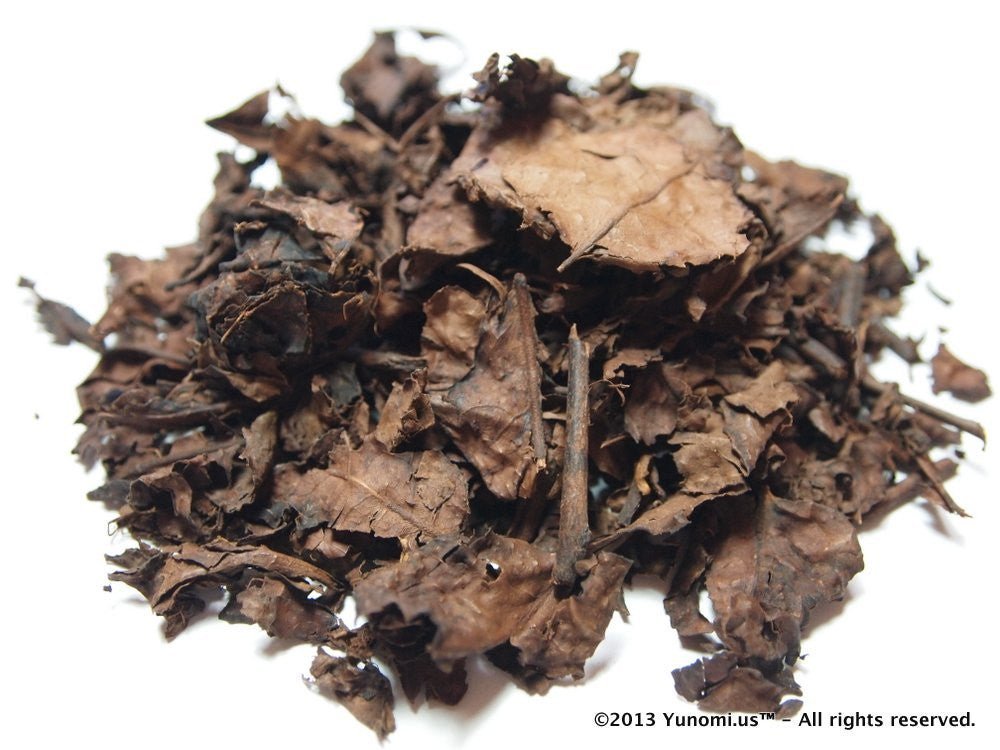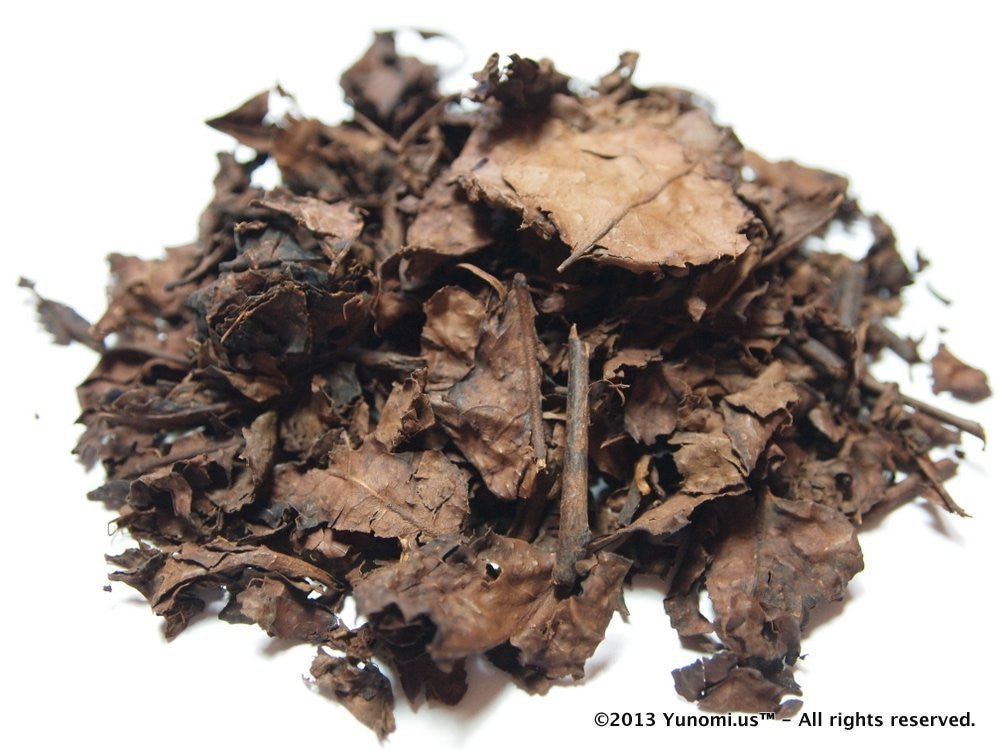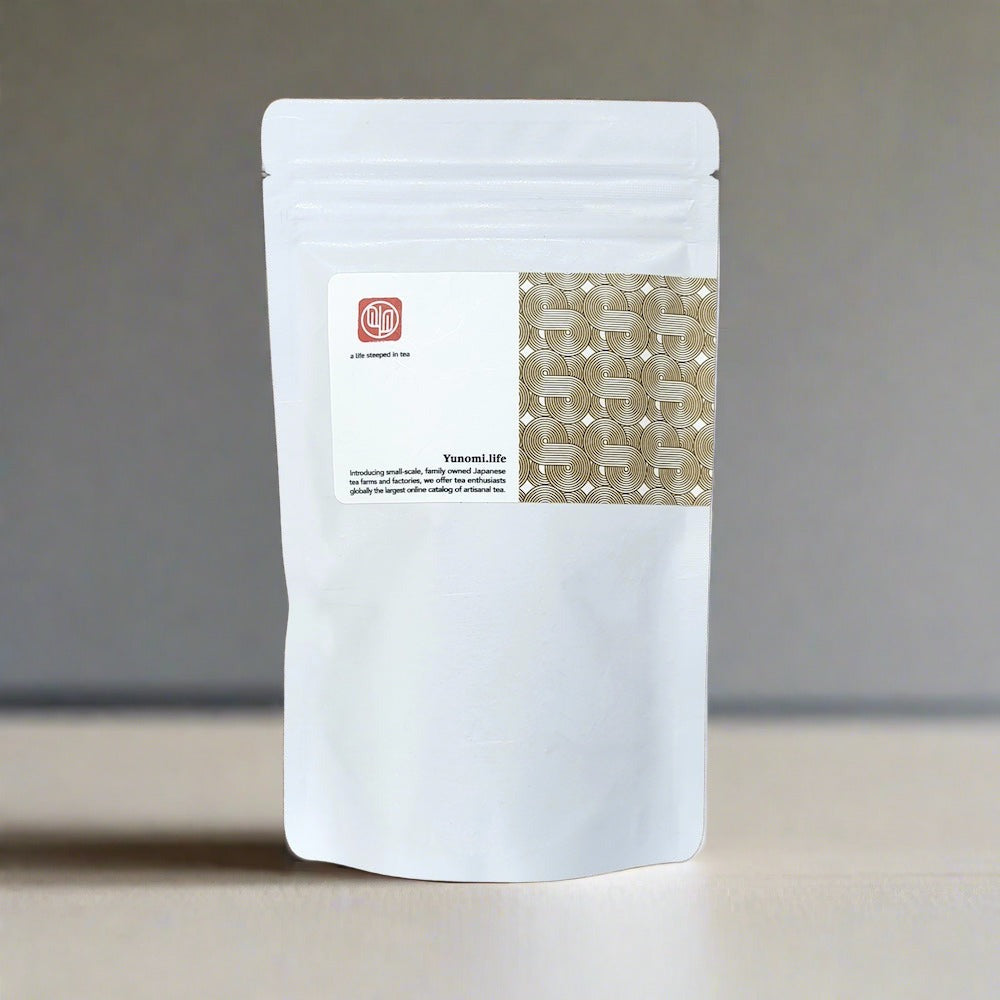#0303.N4 Furyu: Batabatacha, Rare Bancha Tea ふりゅう バタバタ茶
#0303.N4 Furyu: Batabatacha, Rare Bancha Tea ふりゅう バタバタ茶 - 100g / 3.5 oz / bulk bag <-- Out of stock. PREORDER NOW. In general, procurement time is 2-4 weeks (matcha may take 2-6 months). Repacking is possible if a larger size is available (1-2 weeks).
Couldn't load pickup availability
If item is out of stock, add it to your wishlist to be notified by email as soon as item can be purchased.
Shipping Methods & Delivery Guarantee
Shipping Methods & Delivery Guarantee
Shipping fees vary by country, courier, and method. Place items into your inventory and go to the CART page to see the shipping estimate calculator. For some countries, we may need to manually calculate fees after purchase.
YUNOMI.LIFE'S DELIVERY GUARANTEE: We guarantee delivery for all orders shipped by airmail with a tracking number. (Conditions apply. Exceptions when notified.) Occasionally, orders may require additional customs processing for import. We will aid you to the fullest extent of our ability. If your order does not arrive within ONE month from shipment due to no fault of your own, we will replace or refund your order at no extra cost. We reserve the right to refuse shipment if we think delivery to your address may be difficult. This guarantee does not apply if recipient neglects or refuses to pay customs fees & import taxes, neglects to retrieve an order held at a post office or distribution center, or if the order is not deliverable due to a wrong address. Yunomi.life's Delivery Guarantee does not apply to wholesale purchases.
Batabatacha is a tea with an unique tradition dating back to before the 15th century. Loved by the people in the town of Asahimachi Birudan of Toyama Prefecture, it is a fermented tea similar to Chinese pu-erh tea, and is traditionally drunk whisked and foamed with a pinch of salt.
History of Batabatacha
The earliest known record of this tea comes from a visit by Rennyo, the 8th head priest of Jodo Shinshu sect of Buddhism, in 1472 where he noted that the locals were combining this tea with rice and alcohol into a single dish that was eaten/drunk. Production however had died out by the 1970s, and the people of Birudan in Asahi Village were buying their dark tea from tea farmer Hideo Shimizu in Mihama Village, Fukui Prefecture.
In 1975, the aging Shimizu-san had decided to stop production, and Akinobu Hagiwara of Kosugi Village, Toyama learned the process, taking over production for the people of Birudan. In the 1980s, the Village of Birudan itself together made an effort to learn production from Hagiwara-san to ensure the tradition was not lost, and established fields in the village in the 1990s. With the help of Kagawa University Professor Kinjiro Miyagawa, the village improved the quality of the leaves, and now production has become a community project led by the local chambers of commerce.
How is batabatacha made?
The third flush in July - August is the harvesting season for tea leaves used in making batabatacha. Tea leaves are picked by the branch, and are chopped up before steaming until the color becomes yellowish-brown. Steaming process stops the function of enzymes. (This step allows the tea to be classified as green tea. Without this step, the enzymes would oxidize the the leaves turning it into an oolong or black tea, though there are other steps in making oolong and black teas to consider.)
After drying the tea for half-day, it is placed in a wooden box for fermentation (this step would allow the leaf to be classified as a dark tea). When the leaves have reached about 65-70 degrees Celsius, they are laid out in rooms and turned every 2-3 days for 3-4 weeks. They are then taken outside and dried in the shade for half a day, before drying in the sun for 2-3 days.
In this particular region of Toyama Prefecture, batabatacha is served at various events such as a gathering for ancestor's commemoration or when introducing the bride after the wedding ceremony. As a type of 'tea party' held among family, close relatives and friends, the serving of this tea is ceremonial, but casual at the same time. Brewed tea is poured in a tea bowl to be whisked until it creates a foam. People in the town also drink unwhisked batabatacha with their everyday meal.
Vitamin B12
We have not tested batabatacha for vitamin B12 ourselves, but this study claims that the tea contains a significant amount: '456 ± 39 ng per 100 g dry tea leaves and 2.0 ± 0.3 ng per 100 mL of tea drink'. The study conducted testing on rats concluding that 'the vitamin B12 found in the fermented black tea is bioavailable in mammals.'
Source: Hiromi Kittaka-Katsura, Syuhei Ebara, Fumio Watanabe, and Yoshihisa Nakano. 'Characterization of Corrinoid Compounds from a Japanese Black Tea (Batabata-cha) Fermented by Bacteria.' Journal of Agricultural and Food Chemistry. 2004, 52 (4), pp 909–11. (Abstract is available without membership.)
A PDF report of this study is also available here: Hiromi Kittaka-Katsura, Fumio Watanabe, and Yoshihisa Nakano. 'Occurrence of Vitamin B12 in Green, Blue, Red, and Black Tea Leaves.' Journal of Nutritional Science and Vitaminology. 2004, 50, pp 438-40.
We would appreciate comments from nutritionists, food scientists, etc. to help understand the above.
Product Info
- Ingredients: Post fermented green tea leaves
- Harvest: July - August
- Region: Asahi Village, Toyama Prefecture
How to brew batabatacha
Traditionally, you would boil about 20g of leaves in a large kettle for an hour. Then adding a pinch of salt, you whisk the batabatacha with a special whisk for up to five minutes.
Alternatively, we recommend as a lighter more standard tea, using 5 grams and steeping in 200-400 ml of hot water for about 5 minutes.
Vendor Info
- Name: Furyu Bancha Specialty Shop
- Type: Tea shop
- Owner: Nobuhiko Ikematsu, Bancha specialist
- Established: 2010
- Location: 1863-3 Tsubukuhonmachi, Kurume-shi, Fukuoka-ken 830-0047 (Google Map)
About Bancha Specialty Shop Furyu
Bancha Specialty Shop Furyu was established in 2010 by aspiring tea master Nobuhiko Ikematsu, who works directly with farmers in Kurume City, Fukuoka, to develop delicious bancha teas. He is also a specialist gathering rare bancha teas from around Japan.
-
RegionToyama - 富山県
Payment & Security
Payment methods
Your payment information is processed securely. We do not store credit card details nor have access to your credit card information.





